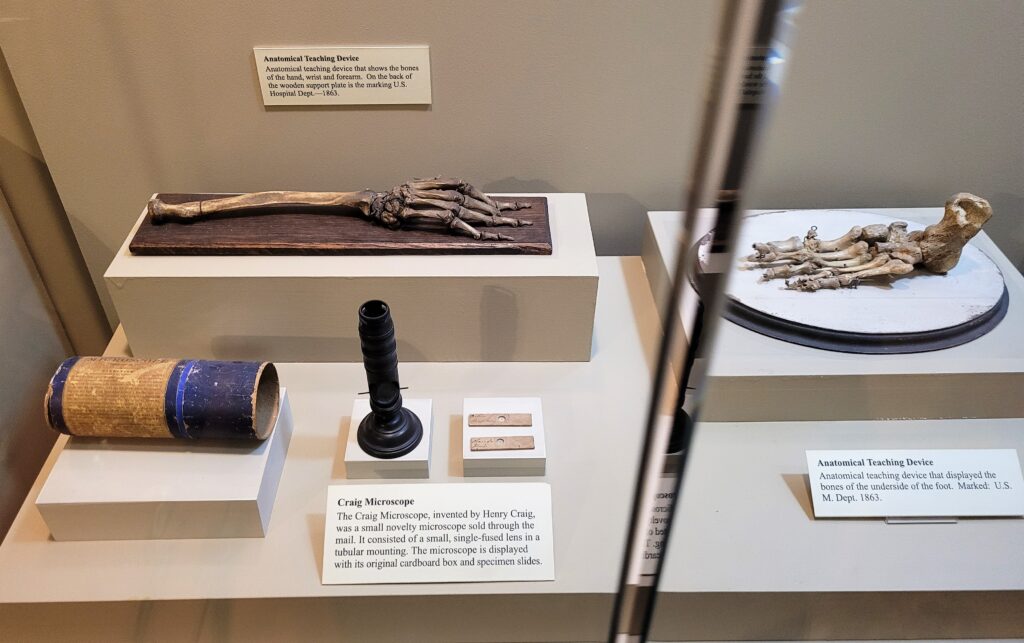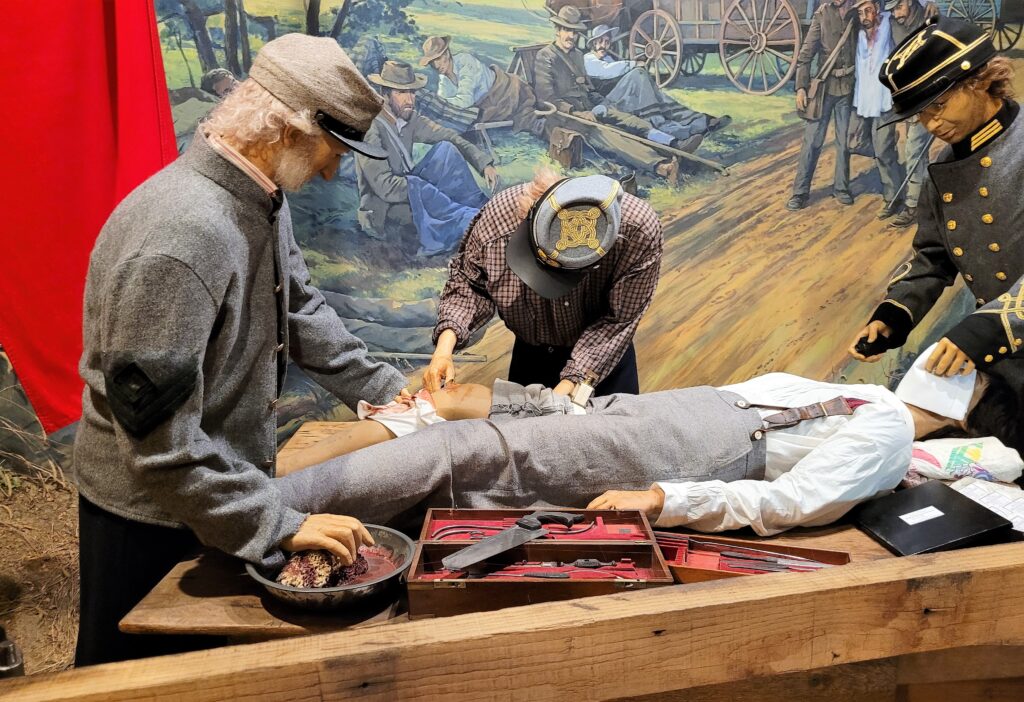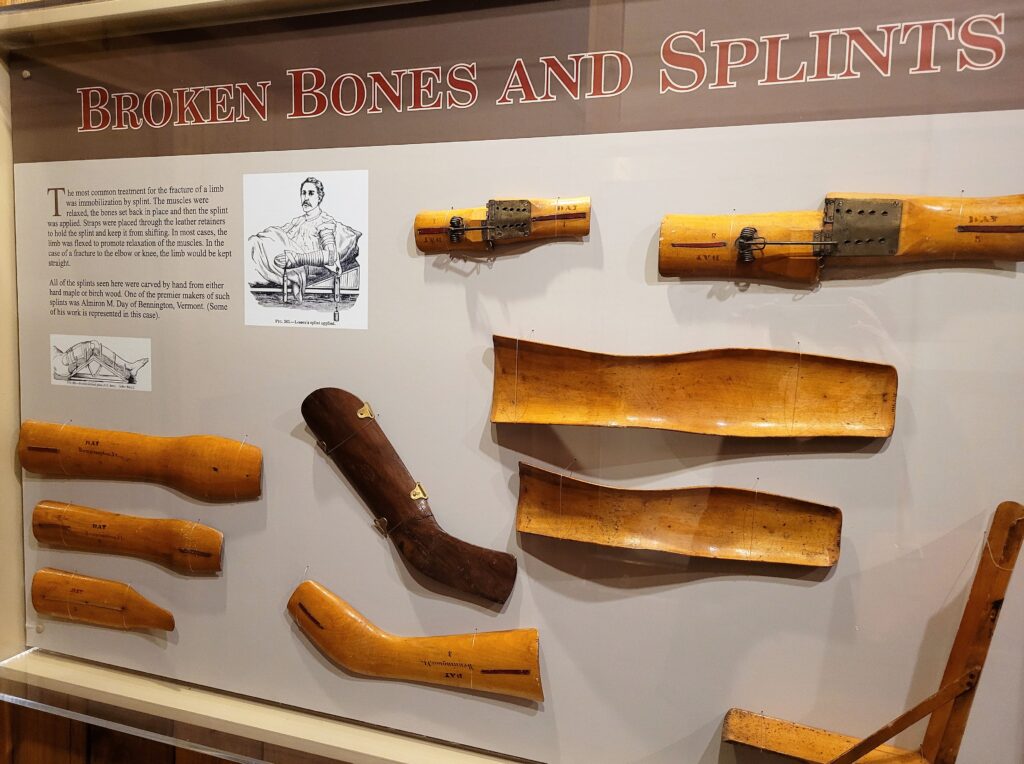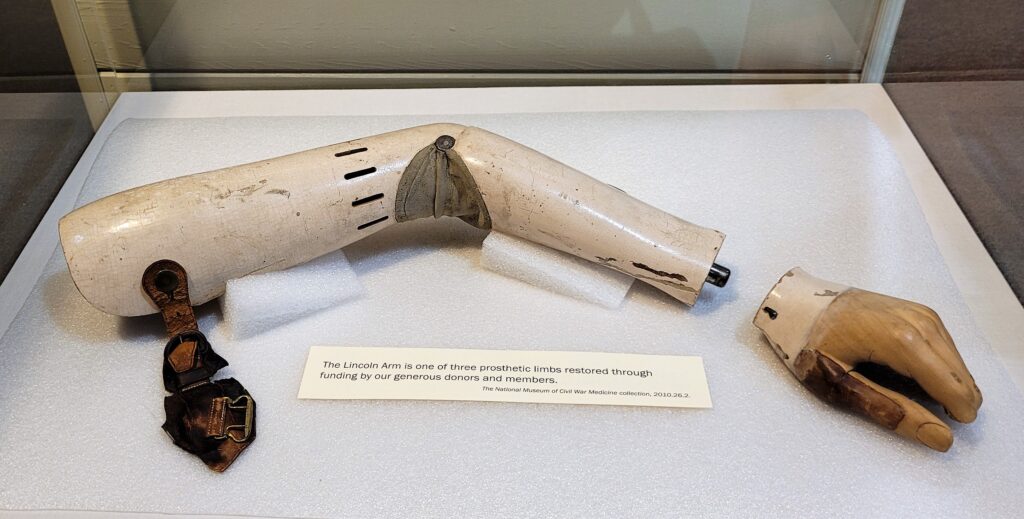Today, we toured The National Museum of Civil War Medicine located in historic Frederick, Maryland. This is our first visit to the museum.
So, we learned a little more about medicine at the time of the Civil War and how medicine evolved from that era.
However, some things developed during the Civil War, such as medical triage, are still in use today. (In order to save lives, triage treats the more serious injuries first.)

Because his glass case shows early medical teaching devices, it also includes a microscope.
Civil War Medicine Museum Tour
At the start of our self-guided tour on the second floor, a friendly museum docent spoke about how medicine has changed over the years. At the time of Civil War, our docent explained, that not much was known about germs and antiseptic conditions, so infections were common.
In addition, there are life-size displays of Civil War encampments and field hospital surgery.

One of the misconceptions people have about Civil War operations is that the soldiers did not receive any anesthesia. But, in fact, the Museum had displays stating that approximately 95% of the operations were done with the patient under some type of anesthesia.
I, also, never knew that riverboats and steamships were used as floating hospitals.
In this display, a Civil War patient is being prepared for surgery on the battlefield.

The displays were informative and interesting.


So, this case holds an early prosthetic arm used in Civil War Medicine.
Pry House Display
Interestingly, the Pry House was used as the HQ for the Army of the Potomac. Also, It was used for the HQ for the Medical Department under Jonathan Letterman.
Farmhouse Magic Blog might have to visit this site at another date.

Ending Notes
By touring this museum, we definitely learned more about Civil War Medicine. In conclusion, the museum has lots of displays and vintage medical instruments. They even offer military and senior citizen ticket discounts.
Please note, their sign states they need more museum volunteers and docents. So if this is something you are considering, please contact their volunteer services.
This interesting and educational museum is definitely worth visiting.
Also, a Special Thank You to the Gentleman at the Museum’s Ticket Counter for allowing me to blog and take photographs in the museum. As always, cameras with flashes are not allowed.

